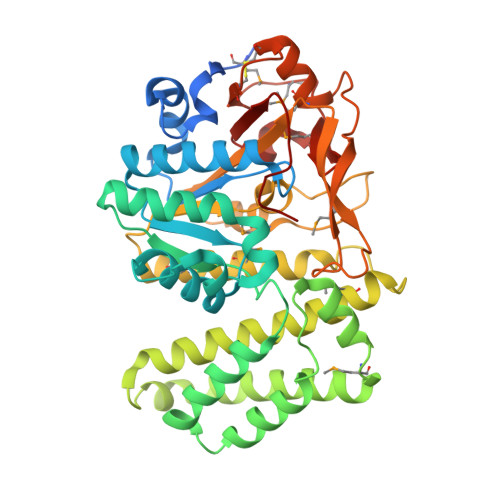Structural and functional insights into esterase-mediated macrolide resistance.
Zielinski, M., Park, J., Sleno, B., Berghuis, A.M.(2021) Nat Commun 12: 1732-1732
- PubMed: 33741980
- DOI: https://doi.org/10.1038/s41467-021-22016-3
- Primary Citation of Related Structures:
6XCQ, 6XCS - PubMed Abstract:
Macrolides are a class of antibiotics widely used in both medicine and agriculture. Unsurprisingly, as a consequence of their exensive usage a plethora of resistance mechanisms have been encountered in pathogenic bacteria. One of these resistance mechanisms entails the enzymatic cleavage of the macrolides' macrolactone ring by erythromycin esterases (Eres). The most frequently identified Ere enzyme is EreA, which confers resistance to the majority of clinically used macrolides. Despite the role Eres play in macrolide resistance, research into this family enzymes has been sparse. Here, we report the first three-dimensional structures of an erythromycin esterase, EreC. EreC is an extremely close homologue of EreA, displaying more than 90% sequence identity. Two structures of this enzyme, in conjunction with in silico flexible docking studies and previously reported mutagenesis data allowed for the proposal of a detailed catalytic mechanism for the Ere family of enzymes, labeling them as metal-independent hydrolases. Also presented are substrate spectrum assays for different members of the Ere family. The results from these assays together with an examination of residue conservation for the macrolide binding site in Eres, suggests two distinct active site archetypes within the Ere enzyme family.
Organizational Affiliation:
Department of Biochemistry, McGill University, Montréal, QC, Canada.















